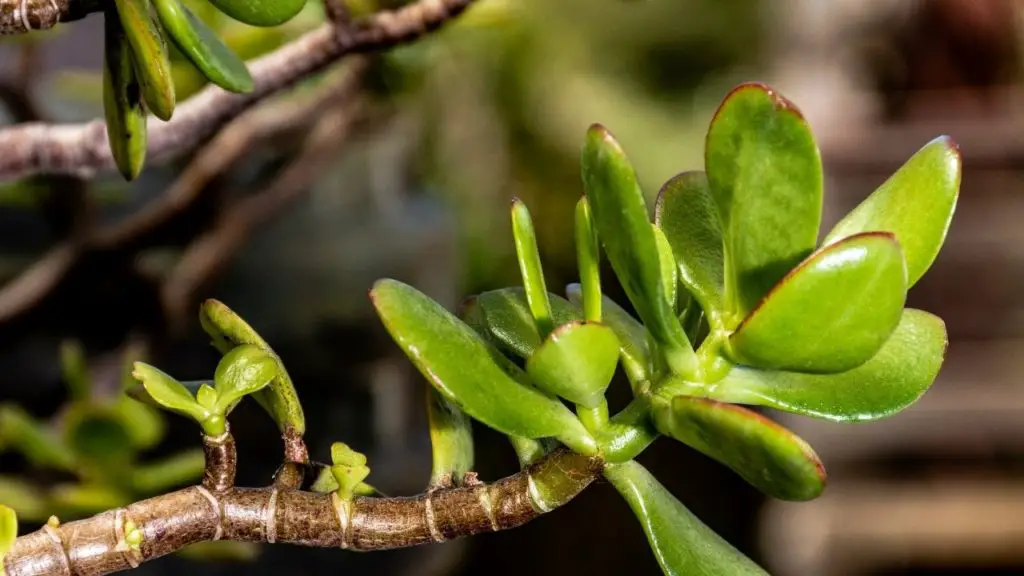The Jade plant is one of the commonly grown houseplants due to its unique features and appealing nature. It is used for decorative purposes indoors and will never disappoint. Most gardeners prefer to grow this miniature tree due to its lush green appearance. Crassula ovata (jade plant) has oval-shaped leaves with woody stems.
It is a low-maintenance plant, but continuous negligence can result in the jade plant dropping leaves. If these plants grow with the right growing conditions, they can develop for years and reach maximum height. Dropping leaves can make your jade plants unhappy, so you need to find the underlying issue.
Jade plants have a habit of dropping their older leaves with the growth of the plant. But if you face an increase in leaf fall, you must find an appropriate solution for this. A continuous drop of the leaves can be dangerous for the plant and impact its growth and appearance. One of the significant reasons for jade plants dropping leaves is the fluctuations in light and temperature.
If you have jade plants at home and your plant faces dropping leaves issues, then this guide will help you deal with the issue.

Reasons why Jade Plant Dropping Leaves and Solutions
Water:
Jade plant leaf drop usually occurs due to the lack of water scheduling. Over or underwatering is sensitive for the plant, and it will not stay happy in these conditions.
The increased number of watering schedules can increase the chances of root rot and result in a fungal attack. Damp and soggy plants will not let the plant grow well, and it can result in causing dropping of the jade leaves.
So, if you see any soft sections on the soil, you must remove the soil after taking out the plant. It can prevent your plant from dropping leaves.
It would help if you also cut down the soft branches because it can result in the stunted growth of your plant and can increase the chances of a fungal attack.
Soltuion:
Underwatering is also a leading cause of the dropping of jade leaves, especially in summers. This plant requires more water during summers, and you need to water the plant when the top inch of the soil gets dried. In low-temperature jade, plants do not show growth, so do not worry if you face any stunt growth.
Light Conditions:
Jade plants dropping leaves occurs due to the low light conditions, especially in winters. In winters, these plants do not receive enough light, and you must understand that it is the right time to redecide the position of your plant.
Soltuion:
Placing the plant near the windows or at any outdoor place will help in controlling this issue. If your home is not receiving enough light due to cold and drafty weather, you can use artificial light.
Temperature Fluctuations:
The optimum temperature required for jade plants’ perfect and healthy growth is between 55 to 75 degrees.
If the temperature is lower than this range, then it can cause leaves to droop. Frost can even be harmful to the plant because it can result in the death of the entire plant.
Soltuion:
So, keep your jade plant happy and provide it the optimum range of temperature. The drastic temperature differences can result in stunted growth as well as the dropping of the leaves. It is interesting to know that the best thing you can do for your plant is moved it with the acclimate. This will provide a balanced temperature and can help out in reducing the dropping of the leaves.
Pests Attack:
Pests can kill your plant and can destroy the healthy appearance of your plant. It is sensitive to both the mealybugs and the scale insect. So, you need to know if any pests attack your plant, mainly if your leaves appear to be deformed. The pests attack do not let your plant grow well, and you need to take strict actions on it.
Soltuion:
You can control the growth of the pests by rubbing alcohol on your plant or by using pesticides spray. Spraying these will help you to deal with the leaves dropping issues. Make sure to spray until your jade plant gets rid of the pest’s attack ultimately.
Poor Drainage:
It can be one of the leading reasons for the dropping of jade leaves. You need to choose well-draining soil for choosing long-term happiness for your plant. The Jade plant is succulent, due to which it prefers to grow in the well-drainage soil.
Soltuion:
Drainage soil is highly beneficial, and it also controls the prevalence of root rot and fungal attack. Root rot does not let the jade plant grow well and results in falling the plant’s leaves.
It would be best to water the plant from time to time after deciding a schedule according to the weather conditions. So, let your plant grow well and schedule the right growing situations for preventing an excess of leaf dropping issues.
Poor Quality of Soil:
Jade plant results in the dropping of the leaves if they are made to grow in a poor quality of the soil. The quality of the soil not only results in the dropping of the leaves but can also cause discoloration of the leaves.
Soltuion:
Moreover, if you want to boost the growth and productivity of your jade plant, choose a good quality of soil and houseplants fertilizer.

Also check: How to Make Cactus Grow Faster?
Natural Leaves Dropping Feature of the Jade Plant
It is the natural habit of the jade plants to drop the leaves along with their age. So, in this case, you do not have to worry about your plant. Jade plants maintain their plant’s appearance on their own by letting the older leaves fall. Also, these plants get replaced by newer leaves with time.
You need to investigate in case if the plant is showing excessive leaves fall. So, find out the route cause to check why your plant is unhappy or distressed.
Final thoughts:
To conclude, the jade plant is a beautifully attractive plant that you can grow indoors for decorative purposes. The lush green plants will appeal to the attention of the visitors.
Due to this, the plant has been one of the most common growers within households. Jade plants do not require much maintenance, and in case you experience your plant losing leave, you need to highlight the underlying reasons.
The common reasons that contribute to the dropping leaves of the jade plants include negligence in watering, light, temperature, soil drainage, and the pest’s attack.
Check the reason to introduce an appropriate solution to control the dropping of the leaves. Implementing these solutions will control the falling of the dropping leaves.
So, if your plant is facing likely issues, do not worry; provide your plant with the optimum growing conditions. It will help in boosting the growth and in better maintenance of the plant.
Frequently Asked Questions about Jade Plant Dropping Leaves
What strategies can help to control leaves dropping of the jade plant?
If your jade plant is experiencing drooping of the leaves, you need to emulate your plant’s growing conditions. Also, you need to emphasize the watering and the sunlight requirements of your plants. Letting your plant grow in well-draining soil will also help in reviving the growth of your plant.
What are the reasons for the jade plant falling off?
Continuous negligence in the care and maintenance of your plant can result in the jade plant falling off. The jade plant’s leading reasons for falling off include watering, light, pests attack, and poor drainage soil. Otherwise, lack of nitrogen can be a reason as well.
What is the right way to water jade plants?
Jade plants are succulent, and they can hold water for longer times in their leaves as well. Therefore, you need to water the plant once in two to three weeks. Also, water the plant in case the top 2 to 3 inches of the soil gets dried. It will help in preventing root rot and underwatering issues.
How to check root rot of jade plant?
You can check the root rot of your jade plant by overlooking the appearance of the plant. Leaves usually become soft due to the root rot and result in wrinkled shapes with patches of yellow color. The severe root cause can cause the stems to wrinkle and sag.
What are the sunlight requirements of the jade plant?
The sunlight requirements of the jade plant are 4 hours per day, and the best place to let your jade plant grow is south-facing or west-facing windows. You need to take care of the sunlight requirements in winters to prevent drooping of the leaves.
